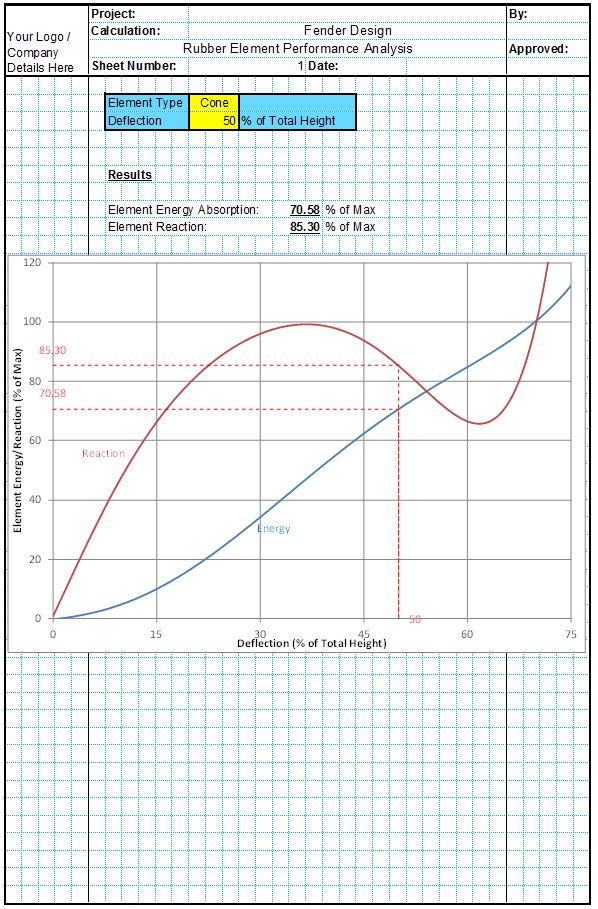In some conditions hydrogen induced stress cracking can occur in metals with cathodic protection. Cathodic protection will cause the formation of hydrogen at the metals surface, particularly at more negative potentials. If these hydrogen atoms diffuse into the metal matrix, they can interfere with the steels microstructure and cause hydrogen related cracks at areas of high stress. This is called hydrogen induced stress cracking or hydrogen embrittlement.
The CivilWeb Cathodic Protection Design Spreadsheet can design cathodic protection systems to any required cathodic protection potential. Care should be taken when designing a system to a more negative potential than -0.8 that hydrogen induced stress cracking does not become an issue.
Recommendations - Stainless Steels
For all practical applications, austenitic stainless steels and nickel based alloys are generally considered immune to hydrogen induced stress cracking in the solution annealed condition. With the exceptions of UNS S30200 (AISI 302) and UNS S30400 (AISI 304) stainless steel, moderate cold work does not induce hydrogen induced stress cracking sensitivity of these materials. The same applies for welding or hot forming according to an appropriate procedure. Bolts in AISI 316 stainless steel manufactured according to ISO 3506, part 1, grade A4, property class 80 and lower (up to SMYS 640 MPa) have proven compatibility with galvanic anode cathodic protection.
For certain nickel based alloys (i.e. austenitic alloys including e.g. UNS N05500 and N07750), precipitation hardening may induce high sensitivity to hydrogen induced stress cracking. For precipitation hardened austenitic stainless steels, the susceptibility is lower and a hardness of maximum 300 HV may be considered a reasonably safe limit, whilst materials with hardness higher than 350 HV should generally be avoided for any components to receive cathodic protection. In the intermediate hardness range (i.e. 300 to 350 HV), precautions should be applied during design to avoid local yielding and/or to specify a qualified coating system as a barrier to hydrogen absorption by cathodic protection. The qualification of coatings for this purpose should include documentation of resistance to disbonding in service by environmental effects, including cathodic protection and any internal heating.
For martensitic carbon, low-alloy and stainless steels, failures by cathodic protection induced hydrogen induced stress cracking have been encountered involving materials with an actual YS and hardness of about 700 MPa and 350 HV, respectively. It is widely recognised that untempered martensite is especially prone to hydrogen induced stress cracking. Welding of materials susceptible to martensite formation should be followed by post weld heat treatment (PWHT) to reduce heat-affected zone (HAZ) hardness and residual stresses from welding. The same recommendations for hardness limits and design measures as for ferritic steels apply. Bolts in martensitic steel heat treated to SMYS up to 720 MPa (e.g. ASTM A193 grade B7 and ASTM A320 grade L7) have well documented compatibility with cathodic protection.
However, failures due to inadequate heat treatment have occurred and for critical applications, batch wise testing is recommended to verify a maximum hardness of 350 HV.
Ferritic-austenitic (duplex) stainless steels should be regarded as potentially susceptible to hydrogen induced stress cracking, independent of SMYS (typically 400 to 550 MPa) or specified maximum hardness. Welding may cause increased hydrogen induced stress cracking susceptibility in the weld metal and in the HAZ adjacent to the fusion line. This is related to an increased ferrite content rather than hardness. Qualification of welding should therefore prove that the maximum ferrite content in the weld metal and the inner HAZ (about 0.1 mm wide) can be efficiently controlled; contents of maximum 60 to 70% are typically specified. Forgings are more prone to hydrogen induced stress cracking than wrought materials due to the course microstructure allowing hydrogen induced stress cracking to propagate preferentially in the ferrite phase. Cold bent pipes of small diameter (uncoated and with mechanical connections, i.e. no welding) have proven records for cathodic protection compatibility when used as production control piping for subsea installations. Design precautions should include 1) measures to avoid local plastic yielding and 2) use of coating systems qualified for e.g. resistance to disbondment by mechanical and physical/chemical effects.
Recommendations - Structural Steels
Based on practical experience, ferritic and ferritic-pearlitic structural steels with specified minimum yield strength (SMYS) up to at least 500 MPa have proven compatibility with marine cathodic protection systems. (However, laboratory testing has demonstrated susceptibility to hydrogen induced stress cracking during extreme conditions of yielding). It is recommended that all welding is carried out according to a qualified procedure with 350 HV as an absolute upper limit. With a qualified maximum hardness in the range 300 to 350 HV, design measures should be implemented to avoid local yielding and to apply a reliable coating system as a barrier to cathodic protection induced hydrogen absorption.
Cathodic protection in closed compartments without ventilation may cause development of hydrogen gas to an extent that an explosive gas mixture (i.e. hydrogen/oxygen) may eventually develop. The risk is moderate with Al and Zn-base galvanic anodes but at least one explosion during external welding on a water flooded platform leg containing such anodes has been related to this phenomenon. (Closed water flooded compartments will not normally require cathodic protection.
Recommendations - Other Structural Materials
Copper and aluminium based alloys are generally considered immune to hydrogen induced stress cracking, regardless of fabrication modes. For high-strength titanium alloys, documentation is limited and special considerations (including e.g. qualification testing should apply.
There is no generally accepted test method to verify cathodic protection compatibility of different metallic materials. Constant extension rate testing (also referred to as “slow strain rate testing”) is applicable to compare hydrogen induced stress cracking susceptibility of materials of the same type (e.g. relative susceptibility of martensitic steels), but a comparison of different types of materials is less straightforward. For more quantitative testing, uniaxially loaded tensile specimens (with constant load), 4-point bend specimens (with constant displacement), crack tip opening displacement (CTOD) and other testing configurations have been applied at controlled cathodic protection conditions.

